Buy Aromasin (Exemestane)
$60.00
Aromasin (exemestane) is an oral medication classified as an aromatase inhibitor, primarily used to treat hormone receptor-positive breast cancer in postmenopausal women. It works by significantly lowering estrogen levels in the body, which helps to slow or stop the growth of cancer cells that rely on this hormone to thrive.
Aromasin, with its generic name exemestane, is a well-established and vital medication in the landscape of breast cancer treatment. As an aromatase inhibitor, it belongs to a class of drugs that plays a crucial role in managing hormone-sensitive cancers. Unlike chemotherapy, which targets rapidly dividing cells throughout the body, Aromasin is a form of hormone therapy that works by targeting a specific mechanism that fuels certain types of breast cancer. This targeted approach is a cornerstone of modern cancer care, offering an effective option for a specific group of patients.
What is Aromasin and How Does It Work
To truly understand how Aromasin functions, it helps to know a little bit about the biology of breast cancer. Many breast cancers are classified as hormone receptor-positive, meaning their cells have receptors that attach to hormones, primarily estrogen. When estrogen binds to these receptors, it acts as a signal, telling the cancer cells to grow and multiply. In postmenopausal women, the primary source of estrogen is the conversion of androgens (hormones produced in the adrenal glands) into estrogen. This conversion process is facilitated by an enzyme called aromatase.
Aromasin is an irreversible, steroidal aromatase inactivator. This is a powerful and precise mechanism. Instead of simply blocking the enzyme, Aromasin forms a permanent bond with the aromatase enzyme, effectively rendering it inactive. By inactivating the aromatase enzyme, Aromasin prevents the production of estrogen in the body’s peripheral tissues, such as fat and muscle. The result is a significant and sustained reduction in circulating estrogen levels. This process starves the hormone-dependent cancer cells of the fuel they need to grow, leading to tumor shrinkage or preventing recurrence. This unique mode of action sets it apart from other aromatase inhibitors, which are reversible, making Aromasin a potent tool in therapy.
Who Is Aromasin For
Aromasin is specifically approved and used for the treatment of estrogen receptor-positive (ER+) breast cancer in postmenopausal women. It is not typically used for premenopausal women, as their ovaries are the primary source of estrogen, a source that aromatase inhibitors do not affect. For postmenopausal women, however, Aromasin offers a critical pathway to treatment, both in the early stages of the disease and in more advanced cases. The drug is often prescribed after a patient has completed initial treatments like surgery, radiation, or chemotherapy, and sometimes after a period of taking another type of hormone therapy.
The Role of Aromasin in Breast Cancer Treatment
The use of Aromasin is strategically integrated into different phases of breast cancer treatment, each with a distinct goal. Whether it’s to prevent a recurrence or to manage a more advanced stage of the disease, its role is defined by its ability to effectively reduce estrogen levels and inhibit tumor growth.
Adjuvant Therapy: Preventing Recurrence
One of the most common and important uses of Aromasin is as an adjuvant therapy. Adjuvant therapy is a treatment given after the primary therapy (such as surgery to remove the tumor) to increase the chances of a long-term cure. For women with early-stage breast cancer that is hormone receptor-positive, Aromasin is often prescribed for a period of several years. Its goal is to eliminate any microscopic cancer cells that may have been left behind after surgery and to prevent the cancer from returning. Clinical studies have shown that Aromasin significantly reduces the risk of breast cancer recurrence when used in this context.
Metastatic Breast Cancer: Managing Advanced Disease
In addition to its role in early-stage treatment, Aromasin is also used to manage metastatic breast cancer. This refers to a stage where the cancer has spread beyond the breast to other parts of the body. In these cases, the goal of treatment is not necessarily a cure, but rather to control the disease, improve quality of life, and prolong survival. Aromasin can be a first-line or second-line treatment option for patients with hormone receptor-positive metastatic breast cancer. By controlling the growth of cancer cells, it can help to manage symptoms and stabilize the disease for an extended period.
Clinical Efficacy and Trial Data
The efficacy of Aromasin is supported by extensive clinical research. Landmark studies, such as the Intergroup Exemestane Study (IES), have demonstrated the drug’s effectiveness. The IES, a large, randomized trial, compared Aromasin with tamoxifen as a sequential therapy for postmenopausal women with early breast cancer. The results showed that switching to Aromasin after two to three years of tamoxifen significantly improved disease-free survival compared to continuing with tamoxifen for a full five years. These findings solidified Aromasin’s position as a valuable treatment option and reinforced its effectiveness in preventing cancer recurrence.
Navigating Treatment: Dosage, Administration, and Side Effects
Taking a medication like Aromasin involves more than just swallowing a pill. Understanding the proper way to take it, what to expect in terms of side effects, and how to manage them are all critical components of a successful treatment journey.
Recommended Dosage and Best Practices
The standard recommended Aromasin dosage is one 25 mg tablet taken once daily, preferably after a meal. Taking the medication with food can help improve its absorption, making it more effective. It is important to take the tablet at approximately the same time each day to maintain a consistent level of the drug in the body. If a dose is missed, it’s generally advised to take it as soon as you remember, unless it’s almost time for the next dose. In that case, it’s best to simply skip the missed dose and resume the normal schedule. Consistency is key, and patients should always follow their doctor’s specific instructions regarding dosage.
Common and Manageable Side Effects
Like all medications, Aromasin can cause side effects. These are typically related to the significant reduction of estrogen, a hormone that plays many roles in the body. The most common side effects include:
- Hot flashes: Sudden feelings of heat and sweating, similar to menopausal symptoms.
- Joint pain and stiffness: Aches and pains in the joints, which can be a significant concern for some patients.
- Fatigue: A feeling of persistent tiredness and lack of energy.
- Nausea: Feeling sick to the stomach.
- Headaches
While these side effects can be challenging, they are often manageable. Over-the-counter pain relievers, light exercise, and lifestyle adjustments can help. Patients should communicate any side effects they experience to their healthcare provider, as they may have strategies to help alleviate the symptoms or adjust the treatment plan if necessary.
Addressing Bone Health and Other Concerns
One important long-term concern with aromatase inhibitors like Aromasin is their potential effect on bone density. Because estrogen plays a protective role in maintaining bone health, reducing its levels can lead to bone thinning (osteoporosis). To mitigate this risk, doctors often recommend:
- Bone density scans (DEXA scans) before and during treatment.
- Supplements with calcium and vitamin D.
- Weight-bearing exercises to help strengthen bones.
It’s also important to be aware of other potential, though less common, side effects, such as elevated cholesterol levels. Regular monitoring through blood tests is essential to ensure a patient’s overall health remains stable while on Aromasin.
Frequently Asked Questions (FAQs) About Aromasin
Is it a form of chemotherapy?
No, Aromasin is not a chemotherapy drug. Chemotherapy works by killing rapidly dividing cells, including both cancer cells and healthy cells like hair follicle and bone marrow cells. Aromasin is a form of hormone therapy. It works by targeting a specific hormone-producing enzyme (aromatase), thereby reducing the estrogen that feeds certain types of breast cancer cells. This makes it a more targeted treatment with a different set of side effects than chemotherapy.
How long do I need to take it?
The duration of Aromasin treatment varies depending on the individual patient’s case and treatment plan. It is typically prescribed for a period of at least five years as an adjuvant therapy to prevent recurrence. However, your doctor will determine the exact length of your treatment based on your specific health profile, the type of cancer, and your response to the medication. It’s crucial to follow your doctor’s instructions and not stop taking the medication without consulting them.
Can it be taken with other medications?
Aromasin can interact with certain other medications, particularly those that affect liver enzymes. It is vital to provide your healthcare provider with a complete list of all medications, supplements, and herbal products you are taking. This includes over-the-counter medications and vitamins. Common drug interactions can include those with strong CYP3A4 inhibitors, which could affect the metabolism of Aromasin. Your doctor will be able to advise you on any potential interactions and make necessary adjustments to your treatment plan.
How does Aromasin compare to other aromatase inhibitors like Arimidex or Femara?
While all three drugs—Aromasin (exemestane), Arimidex (anastrozole), and Femara (letrozole)—are aromatase inhibitors used for the same purpose, they have a slightly different chemical structure and mode of action. Aromasin is a steroidal, irreversible inactivator, meaning it permanently disables the aromatase enzyme. Arimidex and Femara are non-steroidal, reversible inhibitors. This difference in mechanism can sometimes influence a doctor’s choice, but all three are highly effective. The choice of which one to use is based on the specific patient’s needs, their medical history, and potential side effects.
What should I do if I miss a dose of Aromasin?
If you miss a dose of Aromasin, take it as soon as you remember. However, if it’s already close to the time for your next scheduled dose, you should skip the missed dose and continue with your regular schedule. Do not take two doses at once to make up for a missed dose. If you’re unsure, it’s always best to contact your pharmacist or doctor for specific advice.
Be the first to review “Buy Aromasin (Exemestane)” Cancel reply
Related products
Anabolic-Androgenic Steroids (AAS)
Anabolic-Androgenic Steroids (AAS)
Steroids
Steroids
Steroids
Anabolic-Androgenic Steroids (AAS)
Steroids
Steroids




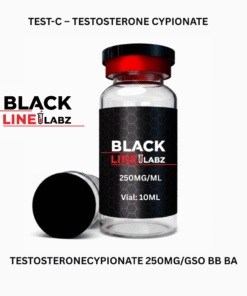
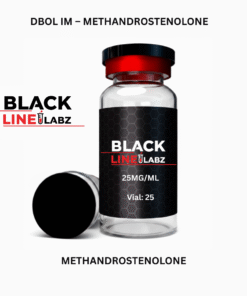
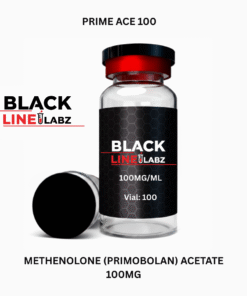

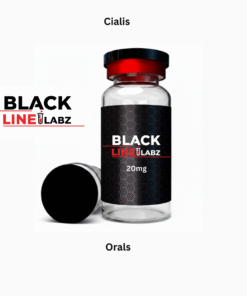

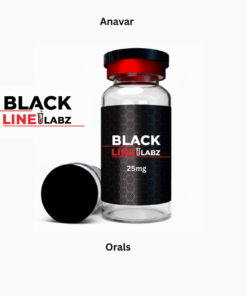
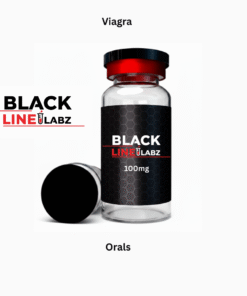
Reviews
There are no reviews yet.